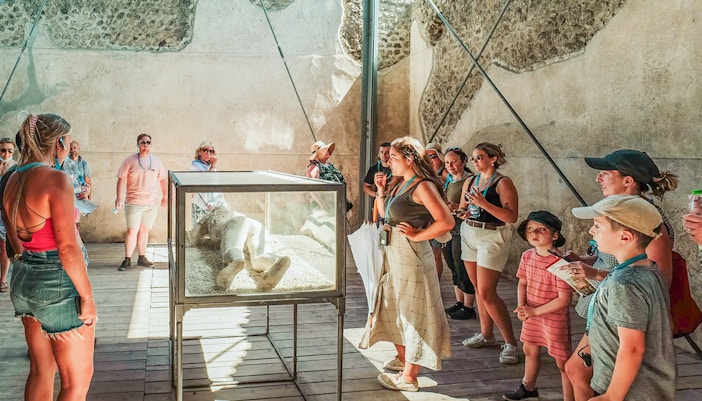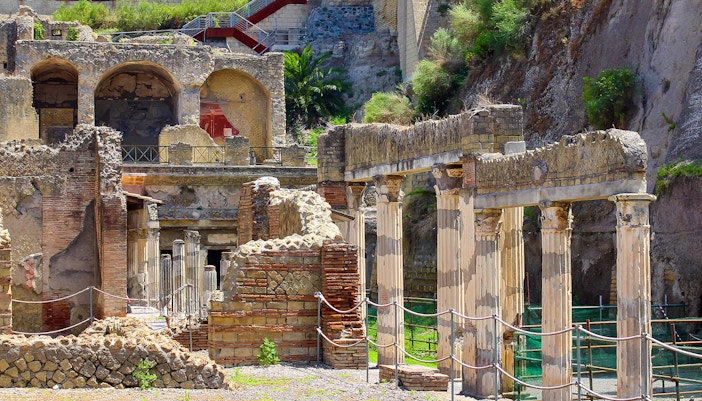One of the early discoveries from the theater were the marble statues of two Herculaneum women, which were gifted by the Duke of D’Elbeuf to the Prince of Savoy. In the 18th century, Duke D’Elbeuf sanctioned further excavations of the theater. He sought to find other such treasures to decorate his residence.
Highlights of the Herculaneum theater

Statues

Stage
The stage was what was first discovered in the theater by accident in 1709. Now, it comprises two pylons built in the 18th century, post the discovery of the theater. There are ruined remains of the Scaenae Frons, or the raised columns behind the stage that framed the performers on stage. There’s also some remains of the Proscenium, or raised theater stage.

Interiors
Descending into the depths of the theater requires squeezing through narrow tunnels and ducking down low arches. There are deposits of lime across the walls and columns with occasional water seepage, making the theater a slippery and dank place. In its heyday, however, the theater boasted marble walls, vivid frescoes and statues. Some of these statues are located in the Dresden Museum and the Archeological Museum of Naples today.

Inscriptions
Two inscriptions are still legible inside the theater, although their accompanying statues have long been removed. One is dedicated to Marcus Nonius Balbo, the then governor of Crete and public beneficiary of Herculaneum. The other was dedicated to Appius Claudius Pulcher, Consul of the Roman Republic in 54 AD. Pulcher had a holiday retreat in Herculaneum.

















